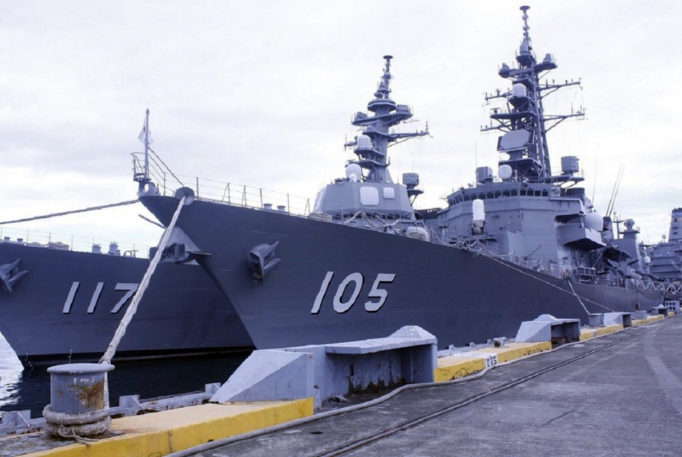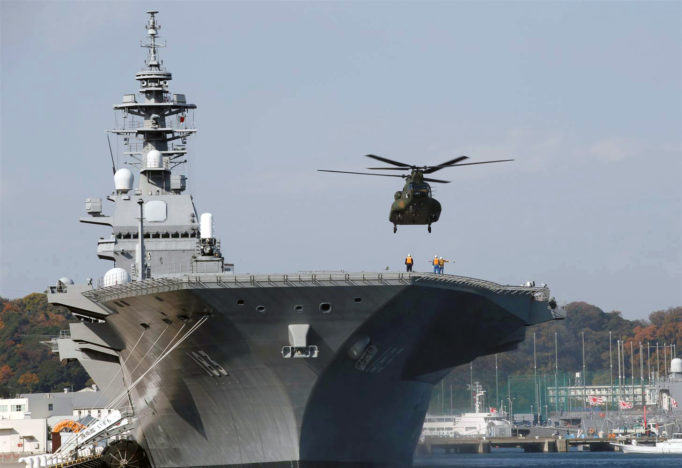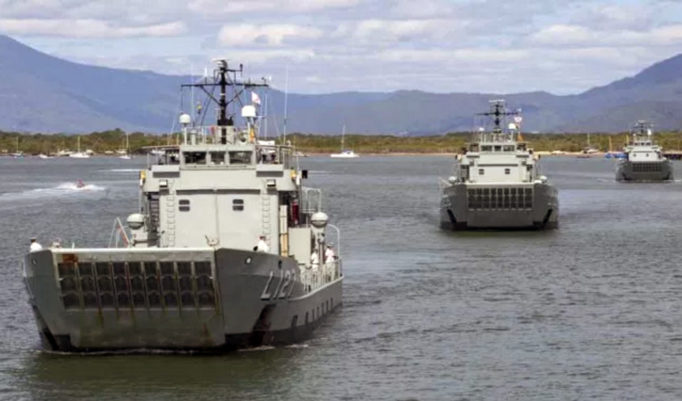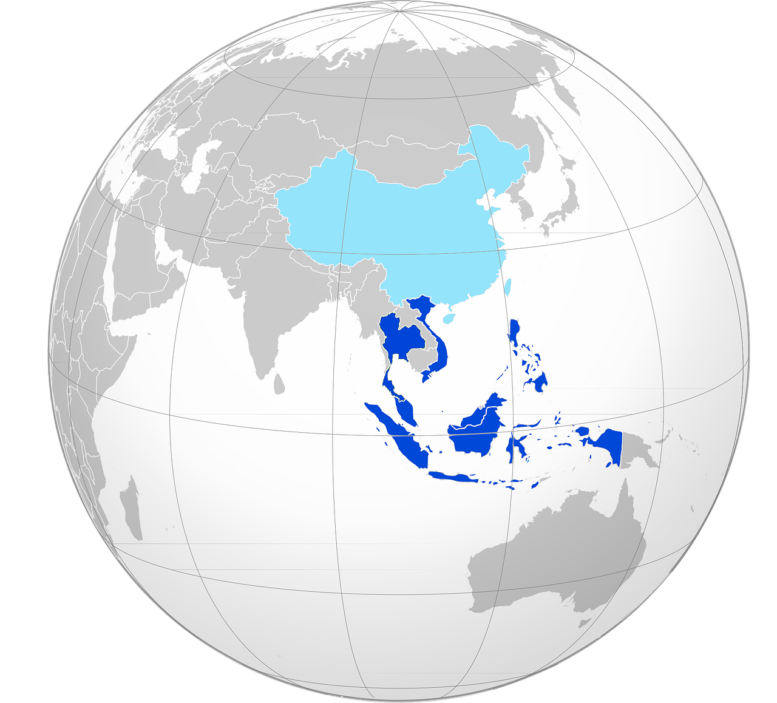The Southeast Asian region is situated in a unique strategic environment that is shaped by the Pacific maritime domain. It is home to maritime nations sitting astride vital sea lines of communication and trade in the Asia-Pacific, with vast water resources and minerals, and oil and gas reserves. Shipping traffic through Southeast Asia is several times greater than the traffic through either the Suez or Panama Canals.
As a large marine eco-region, it is said to be one of the centres of eco-diversity in the world. However, this geostrategic location also poses various challenges and threats to its security. Trends such as the global shift of focus on security and economic issues towards the Asia-Pacific, great power dynamics in the Pacific, the use of asymmetric technologies, and climate change strongly influence regional security decision-making.
As the sea is the major route of access to the region, the maritime dimension of security is of utmost concern to all countries in Southeast Asia. Thus, at the helm of defending the region against security threats from the sea are the navies of the ASEAN. With the projected ASEAN integration, the booming economies of this region will continue to flourish, as barriers to trade will be eliminated, and the navies will once again be called upon to safeguard the seas against threats to regional and national security.
Due to the international nature of the seas, navies have an established history of providing security and working with other navies and stakeholders to protect national and even regional interests at sea and ashore. Particularly, ASEAN states utilize their navies to deepen maritime cooperation and collaboration among themselves. Naval cooperation in Southeast Asia is mainly characterized by a web of bilateral arrangements with a number of multilateral frameworks in place.
Traditionally, ASEAN member-states had preferred unilateral or bilateral arrangements over multilateral frameworks for security cooperation due to the absence of a collective identity, which would drive the need for a more coordinated response from concerned states. Although historically bound, especially with colonial footings of Southeast Asian nations, they lack the collective identity that would justify the need for greater cooperation amongst them.i
Further, some ASEAN member-states are not keen on entertaining proposals for multilateral security frameworks, to avoid the impression that the organization has been evolving towards a military pact. However, there has been an increase in multilateral frameworks on defense and security cooperation in recent years, signaling that there have been changes in the domestic and/or regional environment that prompts states to forge multilateral cooperation.
Cooperation among ASEAN navies is manifested in various agreements implemented, port visits, exercises, and exchanges conducted.
Agreements usually cover information/intelligence-sharing, border patrol and training, and exercises provisions.

Japanese naval ships docked in Subic Bay, Olongapo on 2-May-2017 for a three-day port call before it heads home to Japan. Source: Global Nation Inqirer.net Photo credit: Philippine Navy
Port visits on the other hand are usual activities conducted by ASEAN navies to show and reaffirm amicable relations with the host country while exercises and exchanges are aimed at creating patterns of interaction and at emphasizing mutual gains for involved parties.
Why do navies cooperate?
Cooperation between and among navies in Southeast Asia is driven by the perceived advantages in achieving the state’s objective of developing force multipliers, promoting professionalism and employing naval diplomacy.
First, navies enhance interoperability through cooperative activities such as exercises and exchanges, with the ultimate goal of force multiplication. A force multiplier in this context does not connote forging alliances to combine military forces against a common threat, usually understood as a threat from another state. ASEAN navies rather involve themselves in bilateral and multilateral cooperative mechanisms to more effectively and efficiently address non-traditional maritime security threats.
As observed, ASEAN navies cooperate with intra-regional and inter-regional navies to combine their capabilities and capacities to effectively address these threats, which would be difficult to address unilaterally. For instance, navies do not operate with perfect information given their limited maritime situational awareness capability.
However, with the creation of multilateral information-sharing portals, they are able to contribute information while receiving new ones. Such framework enhances the capability of other navies to identify threats in their maritime domain, and enables them to interdict or respond to distress.
Another case in point is in the area of Humanitarian Assistance and Disaster Relief (HADR) operations. Since the devastation due to natural and man-made disasters is immense, national capabilities and resources are becoming insufficient to respond to, in order to provide relief to affected populations. The regional experience during the Boxing Day Tsunami, Cyclone Nargis and Typhoon Haiyan led to the recognition that the participation and contribution of other states, particularly through their navies, could greatly augment and support the national efforts in HADR operations.

The Izumo helicopter carrier will make stops in Singapore, Indonesia, the Philippines, Indonesia, and Sri Lanka before joining the Malabar Joint Naval Exercise with Indian and U.S. naval vessels in the Indian Ocean
in July 2017, and will return to Japan in August. “The aim is to test the capability of the Izumo by sending it out on an extended mission. It will train with the U.S. Navy in the South China Sea.” Source: NBCnews.com.
Photo credit: Kim Kyng Hoon /Reuters
Second, promoting professionalism is considered an objective for ASEAN navies to cooperate. Although there is no common and definitive definition of professionalism used among ASEAN militaries, it could be inferred that professionalism involves the proper conduct of military personnel in accomplishing their tasks and responsibilities.
Regular exchanges with other navies allow greater personnel interaction, which in turn provides them with adequate time to gather insights on how other navy personnel conduct themselves.
Lastly, navies cooperate with other navies to employ naval diplomacy. Ken Booth argues that states build navies to execute military, constabulary and diplomatic functions to ensure that they are able to use the sea to their advantage. Unlike military and constabulary roles, naval diplomacy entails the use of competent and well-equipped navies for political gains in circumstances short of war.ii
Thus, aside from their war fighting capability, navies are also perceived as instruments of foreign policy – a role where they are able to support their nation’s foreign policy objectives.
ASEAN Navies: A Way Ahead
Protecting a rules-based Community, ASEAN navies are essential in maintaining peace and order in the seas connecting Southeast Asia and the world. Maintaining peace and building trust are vital for robust maritime cooperation, especially for countries surrounding the South China Sea.
Amidst various maritime disputes, navies are at the forefront of upholding the commitments and interests of each country, and versatility is key to keep the navies relevant as various situations arise.

Philippines purchased 3 LCHs, in addition to 2 LCHs donated by Australia’s Royal Navy, to bolster troops, equipment, aid transport and HDR operations. Source: Manila Livewire.com
In this way, the ASEAN navies will play more significant roles in ensuring peace and stability in the region while upholding the unique maritime identity of the Southeast Asian region.
Each navy has its own strengths it can lend to the region, especially with numerous adaptable capabilities to support tasks across the operational spectrum. Information-sharing, people-to-people and technology exchanges are important pillars in cooperation. Thus, navies should further enhance their mechanisms for information exchange and civil-military operations in order to harness the skills and expertise of the ASEAN’s best assets — its people.
_____________________
i Amtav Acharya, Constructing a Security Community in Southeast Asia: ASEAN and the Problem of Regional Order, London: Routledge, 2001.
ii James R. Homes, “Why hold an International Fleet Review? Insights from Ken Booth,” Naval Diplomacy and Maritime Power Projection: Proceedings of the Royal Australian Navy Sea Power Conference, Andrew Forbes (ed), 2013.
